By Leslie Nemo
A park that will eventually be atop an interstate in Dallas aims to reunite a neighborhood cut in half. The Southern Gateway Park will eventually be a 5-acre cap park built as part of a $666 million overhaul to Interstate 35. The series of lawns, pavilions, and walkways — along with a new multipurpose community building — will allow residents on either side of the Oak Cliff neighborhood to reunite atop an interstate that first divided the community in the 1960s.
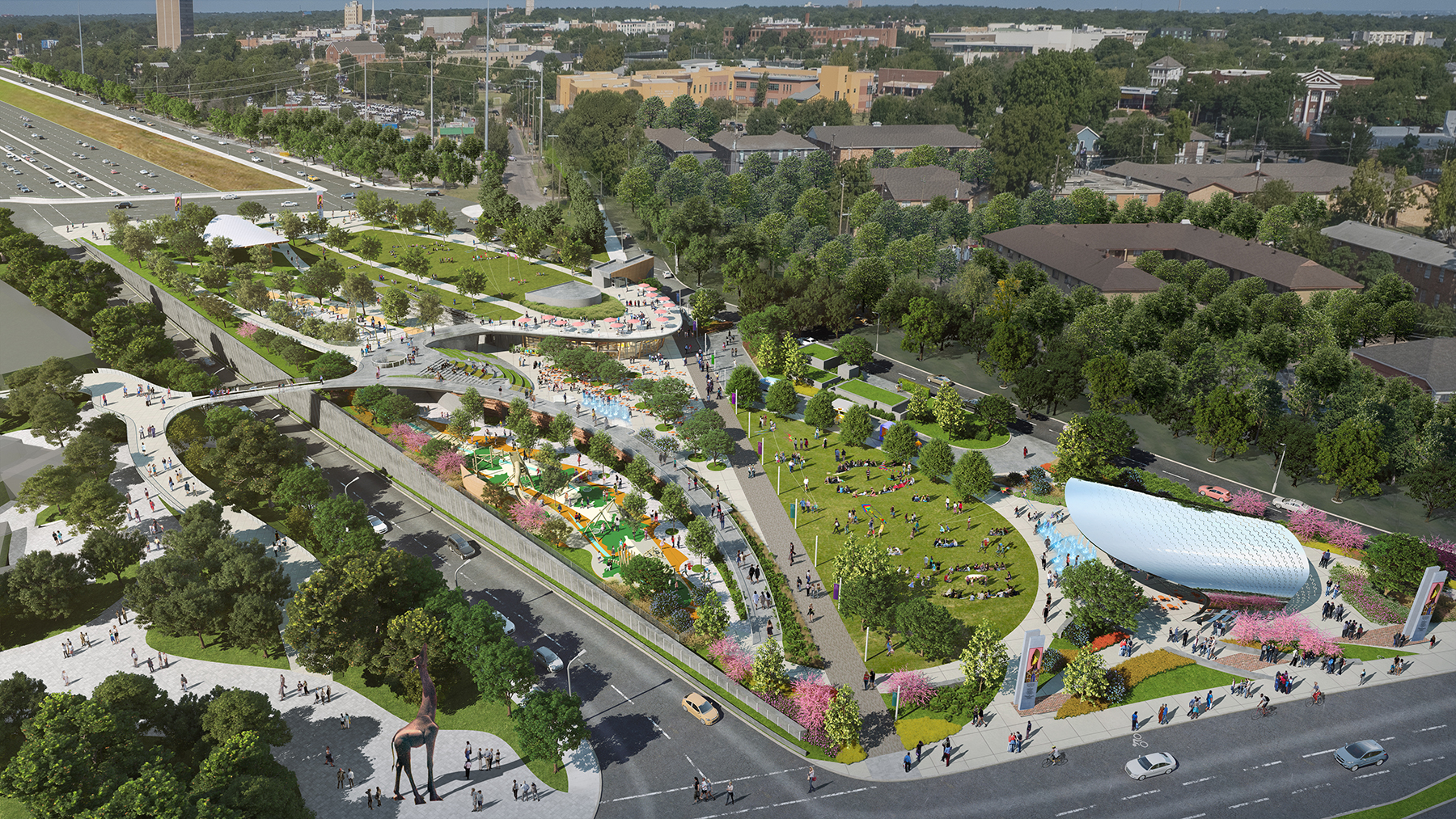
The first $82 million phase of the project — a cap over a segment of the new highway lanes and 2.8 acres of parkland sitting on top — should wrap up by the end of 2024. A second cap-and-park phase with a $97 million budget and undetermined timeline will complete the full park. “We do have an opportunity to reconnect Oak Cliff,” says April Allen, the president and CEO of the nonprofit Southern Gateway Public Green Foundation, which is responsible for funding and maintaining the park. “How do we honor the place and space that we're in?”
Decades-old destruction
The Oak Cliff neighborhood encompasses a smaller patch of city known as the 10th Street Historic District. Established in the wake of the Civil War, 10th Street became a part of Dallas where individuals recently freed from slavery built up a new community. This and other freedmen’s towns appeared throughout the country, dating from the second half of the 1860s to about 1930. In the highway construction boom following World War II, however, city and state authorities around the nation disproportionately directed the infrastructure through Black neighborhoods, disrupting social scenes and local business centers in the process. Dallas was no exception. Officials routed I-35 through the 10th Street area of Oak Cliff, placing the roadway in a channel below street level.
In 2017, the Texas Department of Transportation moved forward with plans to widen I-35, a construction schedule that included adding a cap park in Oak Cliff where neighborhood streets and homes had once stood. Though TxDOT built the deck with funding from the North Central Texas Council of Governments and bond money from the city of Dallas, the Southern Gateway Public Green Foundation formed with contributions from private and philanthropic donors to pay for the initial $35 million park construction and eventual park maintenance.
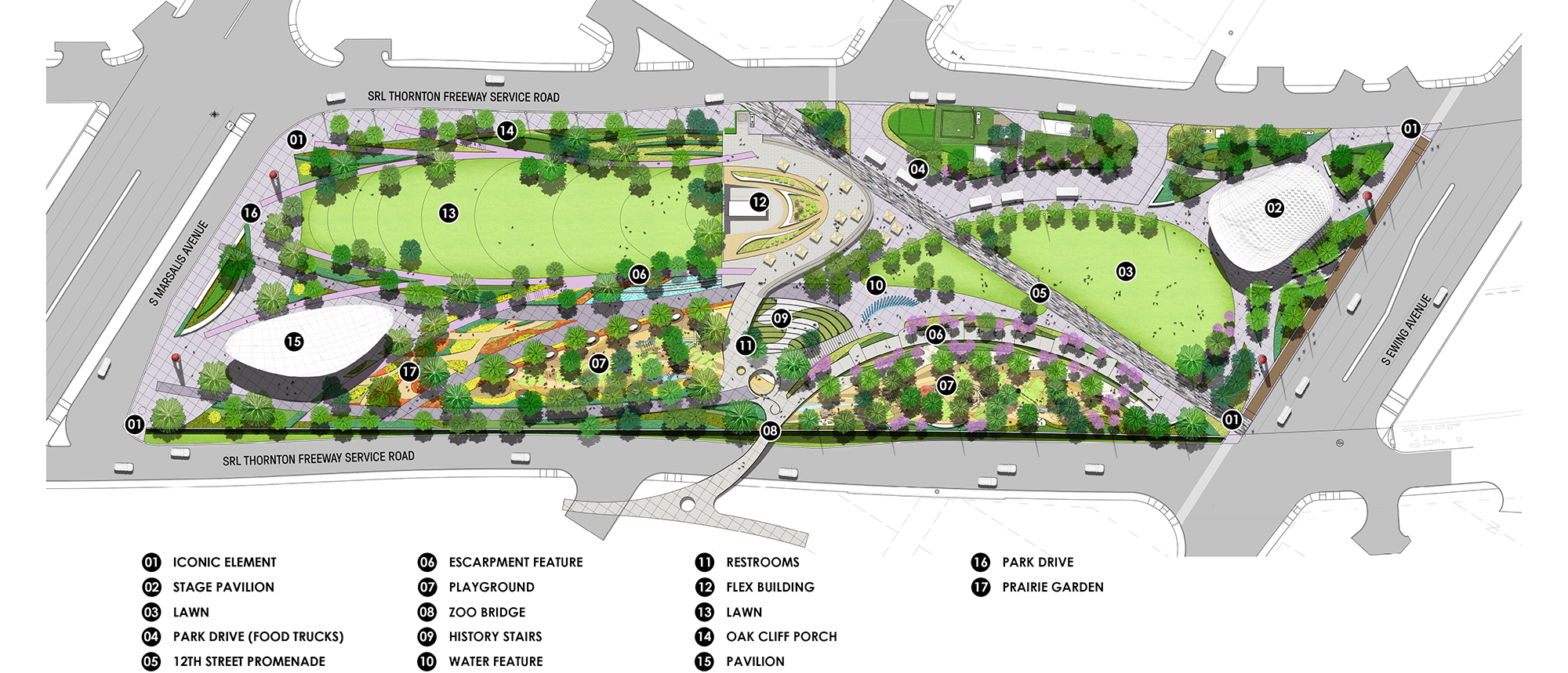
“It was really important to us at the foundation to center the project in the local community equity,” says Allen. For over a year, the organization led or co-hosted surveys, meetings, and focus groups, getting feedback from over 500 participants on what locals wanted and needed the project to help deliver. The input culminated in the Equitable Development Plan, a list of priorities for the surrounding community that includes educational opportunities and health and wellness promotion.
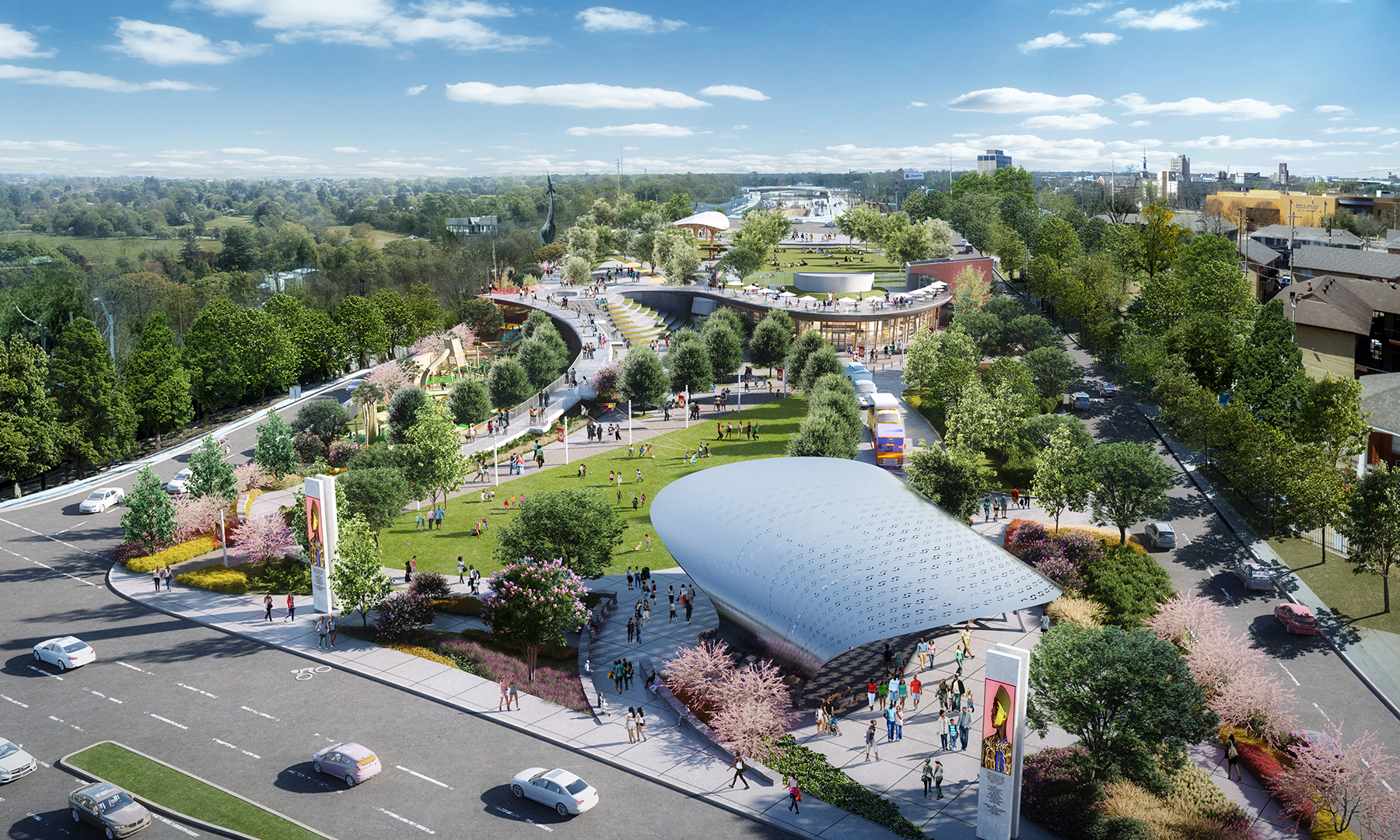
Highway safety
Before the park and its amenities could back any equitable development goals, the park support system had to go up. Highway cap construction essentially required making an extra-wide bridge, says Robert Brown, P.E., DBIA, M.ASCE, a senior vice president and local business lead at WSP, the engineering firm hired by the state on a design-build contract for reconstruction and widening I-35 as well as completing the park deck.
In this case, the cap is made of concrete girders and decking standards laid out by TxDOT. The final dimensions meant that cars passing beneath would enter one side and emerge 500 ft later — a distance that qualified the bridge as a tunnel, according to National Fire Protection Association standards.
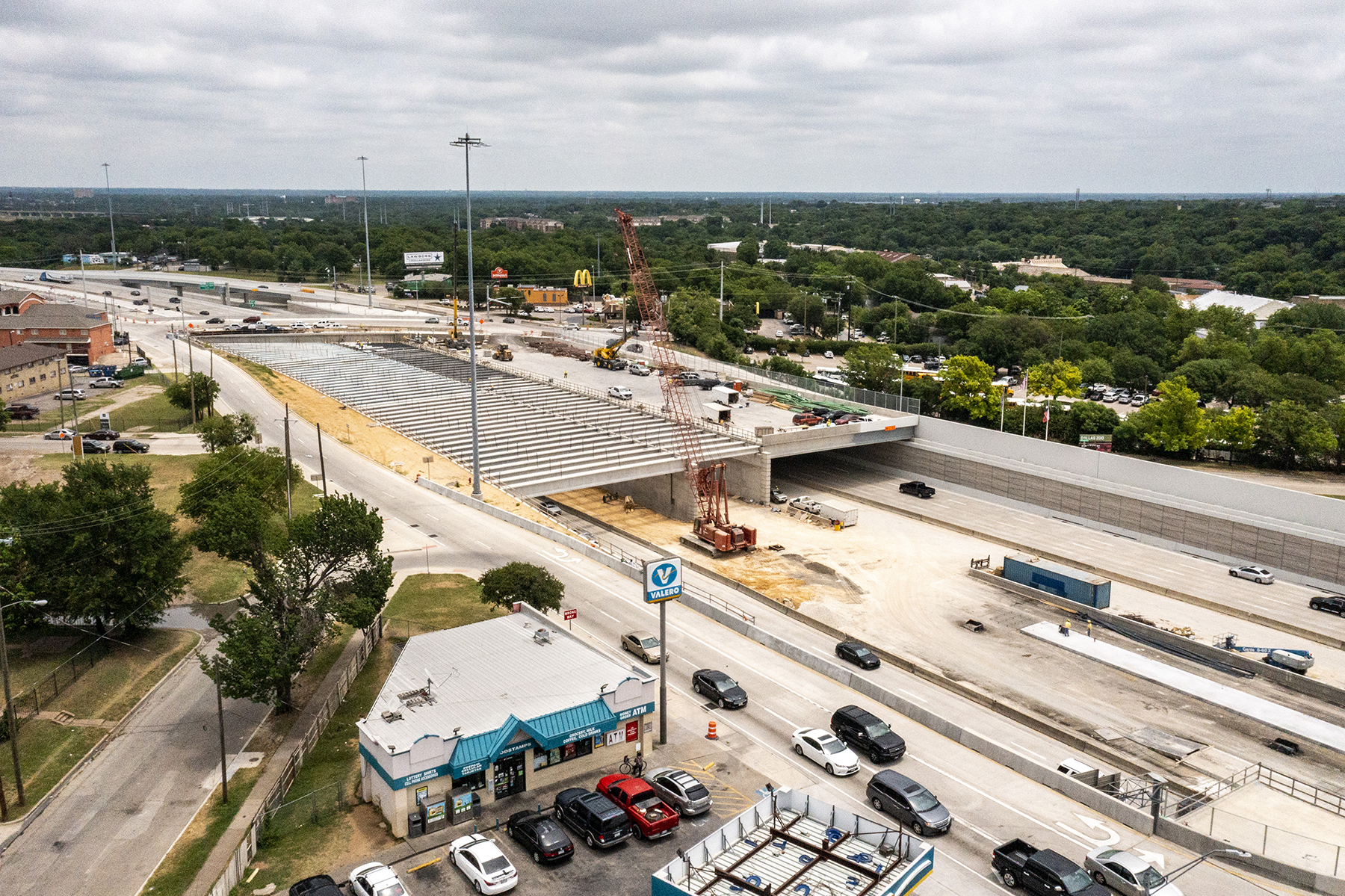
As a result, the WSP team needed to ensure the design had egress passages and adequate ventilation. A supervisory control and data acquisition system consistently measuring environment details like temperature and oxygen levels had to be installed along with a closed-circuit recording system, overhead lighting, sprinklers, and water pipes for firefighters. To prove the concrete could withstand flames of a heat and duration determined by the NFPA, fire-resistant boards went up around the tunnel structural supports.
The bulk of the fire detection and mitigation infrastructure is underneath the concrete bridge deck, which is topped with a waterproof membrane, a drain mat, and filter fabric. This is topped with variable depths of soil and plastic foam to meet load requirements, says Chuck McDaniel, FASLA, a managing principal at the Dallas office of SWA Group, the landscape architecture firm working on the greenway. The firm worked with HKS Architects, the architect of record hired by the greenway foundation, to create structural models.
Neighborhood needs
The final design for the entire park — the first half of which should be open to the public in late 2024 — includes two lawns and a playground flanked by trees, all of which will be nestled around a diagonal pathway tracing where 12th Street used to run through Oak Cliff. Visitors will also be able to walk up to the roof of a new multipurpose community building atop the interstate cap. Unlike other parts of Dallas, Oak Cliff has undulations from rocky bluffs called escarpments. A glass-reinforced concrete skin modeled to have the same look and texture as the geological features will run down the sides of the park ramp to help the green space blend into its surroundings.
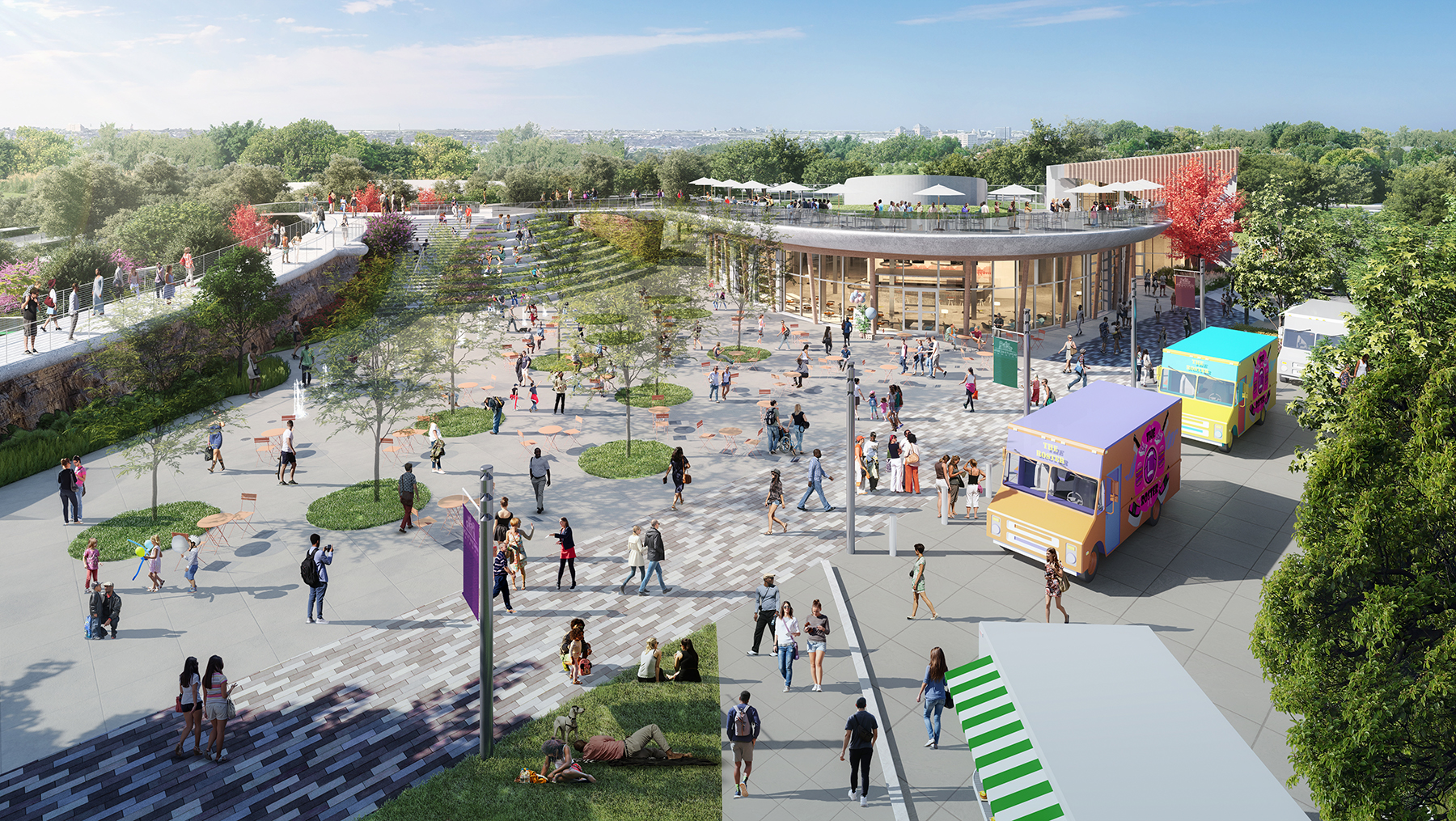
The organization hopes to make the greenway integral to community celebrations, such as Cinco de Mayo. “I think we can leverage the park in a way that really honors the community that we live in,” Allen says, “and gives us another venue to be proud to be from Oak Cliff.”
Park construction began in October.
This article is published by Civil Engineering Online.



